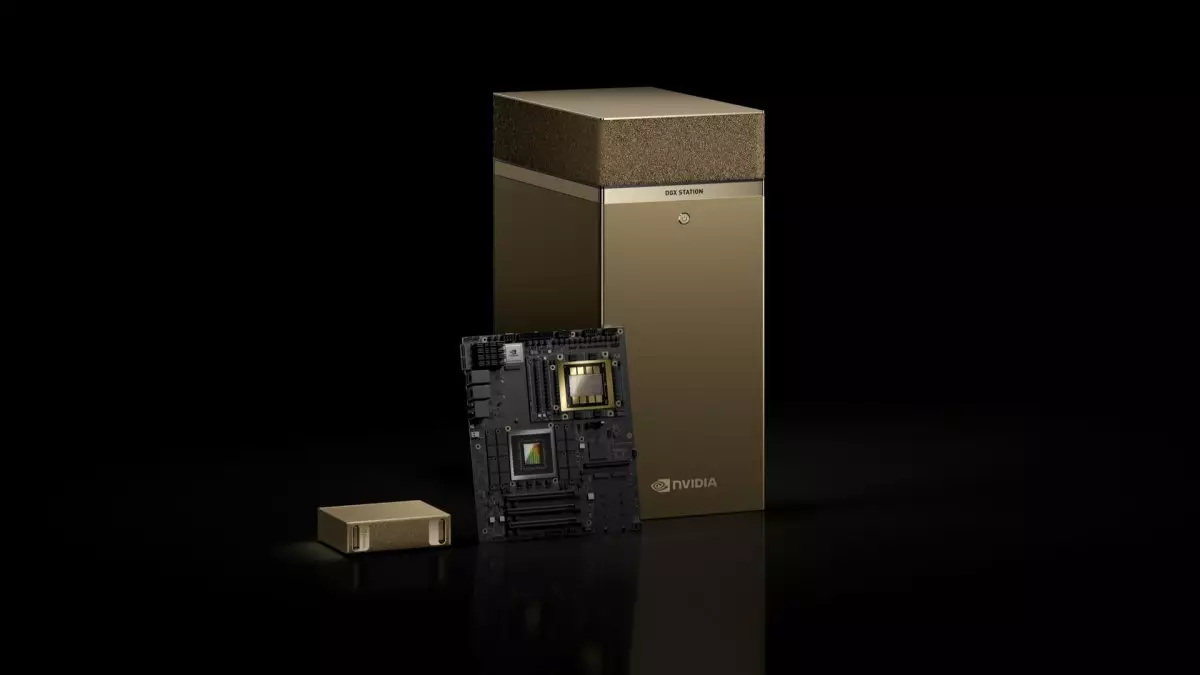At the recent GTC 2025 event, Nvidia ushered in a new era in artificial intelligence with the launch of its “AI personal supercomputers,” powered by the innovative Grace Blackwell chip platform. This announcement, made by the charismatic Jensen Huang, the company’s founder and CEO, signals a monumental shift in how businesses and developers approach AI technology. Instead of just upgrading existing technology, Nvidia is redefining the standard for computing machinery specifically tailored for AI applications, enabling users to prototype and fine-tune models that could potentially change entire industries.
The Power Behind DGX Spark and DGX Station
Nvidia’s DGX Spark and DGX Station are no mere enhancements; they are embodiments of computational prowess designed to handle the most demanding AI workloads. The DGX Spark stands out with its astounding capability to execute up to 1,000 trillion operations per second—an impressive feat made possible by the advanced GB10 Grace Blackwell Superchip. This performance opens doors for real-time applications and large-scale model training that were previously constrained by hardware limitations.
On the other hand, the DGX Station, equipped with the GB300 Grace Blackwell Ultra Desktop Superchip and a massive 784GB memory, positions itself as a versatile workstation. While the Spark may appeal to cutting-edge enterprises focused on speed and performance, the Station caters to professionals seeking robust systems for a broader spectrum of AI tasks. Nvidia’s forward-thinking approach is evident in their strategy to offer a complete lineup that can address diverse needs, from compact models to powerful workstations.
The Vision for AI Integration
Huang emphasized during his keynote that the future will be dominated by AI agents that integrate seamlessly into our daily operations. This assertion lays the foundation for understanding the necessity of these new computing platforms. As AI continues to evolve, the demands on hardware will increase, requiring a shift in how computing power is allocated and utilized in enterprises. Huang’s assertion that “AI agents will be everywhere” is not merely a prediction; it is a clarion call for businesses to adapt or risk obsolescence.
With these new machines, Nvidia is not only addressing current needs but is also preparing for a future where efficient AI processes will be integral to the stacks of various industries. The company’s commitment to supporting diverse applications—from high-stakes research to consumer-facing AI solutions—highlights their forward-thinking philosophy.
The Ecosystem of Enterprise Computing
The DGX platforms will be released through a range of manufacturing partners, including industry giants like Asus, Dell, and HP. This collaborative endeavor signifies a shift in how enterprises will structure their AI infrastructure. Rather than relying solely on proprietary solutions, businesses will have access to a plethora of options that can be tailored to their specific requirements. It places Nvidia not just as a hardware producer but as a leader in fostering an ecosystem that prioritizes adaptability and innovation.
As we stand on the precipice of this new technological era, one cannot help but feel excitement for the limitless potential these supercomputers represent. Nvidia’s approach is not about creating tools; it is about crafting the very architecture of a future dominated by artificial intelligence. This vision is equally challenging and invigorating, posing questions about our readiness to embrace a world intertwined with intelligent systems.

